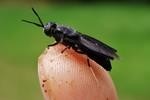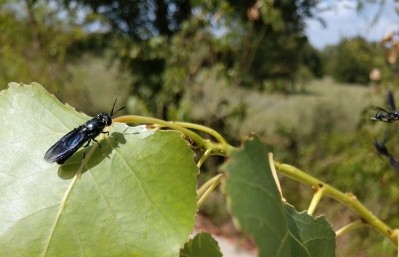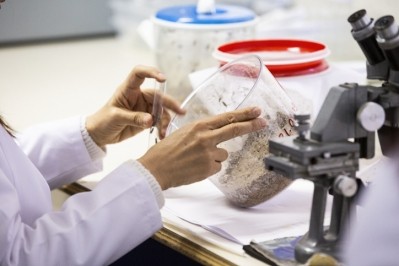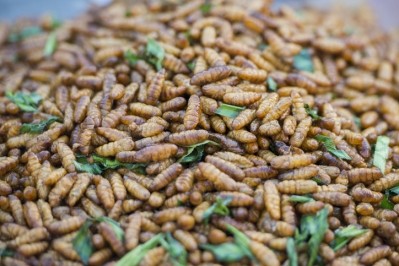special edition: feed protein innovation
US insect feed development: From creepy crawlies to high quality protein ingredient

We spoke to two innovators who are working to expand the role of insect derived products in feed and to address production challenges for the sector as a whole.
Jeff Tomberlin, professor and AgriLife research fellow at Texas A & M University, started working with insects several years ago following an interest in sustainability and the potential for black soldier flies (BSF) to be used for both waste management and mass generation of protein.
“Everything I do, it all goes back to how nutrients get recycled,” he told FeedNavigator.
He is interested, he said, in harnessing nature’s recycling ability for the benefit of humanity.
Although work on the potential of BSF and other insect species has been ongoing, he said more research is needed to support the sector's further development.
Liz Koutsos, president of EnviroFlight, said a good deal of research has already been undertaken as part of the process of having insect-based ingredients approved for use in animal feed.
“The next phase of research is really about [finding out] what else does that ingredient provide to the animal,” she told us. “Does it provide things that promote gut health? Does it help stimulate the immune system? … Those kinds of questions are where I think we’ll see the next phase of research focusing on in, when it comes to animal nutrition and insects.”
Collaborating with researchers at other academic situations, Tomberlin is currently in the process of trying to establish a research center to plus those knowledge gaps, and would do so on a global scale.
“We want to create a center for insects as food and feed,” he said. “If we get it funded, it will serve as a centerpiece through which all these industry groups can have this research done and have these questions answered.”
Such a facility would accelerate the use of insects and develop safe insect-derived products at scale, while at the same time creating a stable job market in relation to insect protein production, he said.
Challenges for the insect industry
The recent approval in the US of Black Soldier Fly (BSF) larvae use as a poultry feed ingredient has been helping to expand the market, said Tomberlin.
“It’s been opening the door for the industry, [enabling it] to truly blossom,” he said. “We’re seeing companies develop in North America and abroad that are angling or pursuing the idea of mass production to meet the demands of the larger scale industries, like aquaculture and poultry.”
The recognition and acceptance from regulatory agencies is a positive step forward, he said. However, there is “still a lot of education [outreach work] that we have to do."
And while the feed and animal production industries have been receptive to the use of insects or insect-derived products, the volume of insects needed for commercial-scale production is lagging, he stressed.
“They want it, but we’re not ready to supply it,” Tomberlin continued “We’re trying to work toward that.”
There also are some issues that have to be addressed before insect production can really reach large commercial scale. The sector would benefit from capital investment, which would be used to support diversification and scaling up of production.
“Right now the industry does it all,” he said.
Companies work with insects, grow them, feed them, harvest them and produce them into other products, he stressed.
“I’d like to see the industry eventually diversify – so you’ll have companies that produce the fly that can then be sold and used in waste management [or] to produce the protein, and eventually you’ll have brokerships located throughout the world to help consolidate the [sector],” he said.
“One company may not be able to produce all the product needed, but through a brokerage, you might be able to bring 10 companies together and then supply the aquaculture industry or the poultry industry,” he added.
Global standardization for products and quality assurance also needs to be addressed, he said. Additionally, more funding and support of research is needed.
“The level of research that is taking place is fairly limited on a global scale and is extremely limited in North America,” he said. “The variability in production around the world is high right now – we need consistency.”
“We need more people doing research to focus on quality assurance questions and efficiency questions related to just this one insect – BSF - not counting the others,” he added.
Development work with other insect species like crickets or mealworms is also needed, he said.
Looking at how to diversify the types of products or feed ingredients generated, such as essential amino acids or protein or chitin, is of interest as well, said Tomberlin.
“Right now we talk about mass production and use as feed and that’s all well and good – [but] you don’t buy the cow, you buy part of it,” he said. “A future avenue of research is how do we deconstruct the insect, and diversify the product stream so it’s not just the whole insect? It might be the components of the insect that increase the value of the insect itself.”
Grant funding may be available to researchers interested in exploring work with insects, he said. However, there is competition for the funding and more work to educate research project reviewers may be needed.
“The vehicle is the agency providing the funding, but the cogs are the researchers on the review panel who have to decide if the work is worthy of being funded or not,” he said. “I do think there’s a fair amount of skepticism out there in the research community on the value of the industry.”
Factory location
“I always want to move faster,” said Koutsos.
The Ohio-based black soldier fly production company opened its first commercial-scale production facility at the end of 2018.
“There are thoughts on where plants two, three, four and five will be,” she said. “We are looking for either co-location for facilities with industries that would supply the input or a central location where you have pre-consumer food waste or co-location with our customers next to our plant.”
There continues to be a “tremendous amount of interest in alternative proteins,” she said.
An element of Enviroflight’s work with BSF has been developing applications to have its insect-derived products approved for use in additional species, said Koutsos.
The company is also looking to future approvals to allow product use in pet food and to bring new products like insect oil to the market, she said.
“Right now the approvals are for whole larvae and meal – and we know that the black soldier fly oil is very interesting,” she said. “It’s rich in lauric acid, which has antiviral and antimicrobial properties, so it’s a unique fat source and [has] potential for feeding young animals.”
“We’re excited to be conducting the research and be putting that forward to FDA and AAFCO for review,” she added.
















